Elemental Ghosts and Human Mysteries: An Interview with Walter Ungerer
Walter Ungerer’s Monarda (2010) has been screening across the country as part of the 2011 Black Maria Film Festival, a traveling program of new experimental cinema. Like much of Ungerer’s work, the 10-minute Monarda explores the mystifying qualities of nature. Beginning with a shot of grass, Ungerer quickly abstracts his images through digital manipulation until they are barely recognizable. Traces of natural forms (leaves, twigs) ground what is an otherwise indescribable procession of images. Though the visuals evade literal synopsizing, there’s a simplicity and concision to the film that allows the viewer to get caught up in their own experience rather than get sidetracked on decoding the filmmaker’s intentions. Monarda instills a feeling of both apprehension and wonder in the viewer. It’s a disquieting film, but one whose subtle craft and atmosphere becomes more impressive over multiple viewings. Ungerer’s version of nature is as ominous as it is beautiful, as inviting as it is distancing. We may recognize bits and pieces of Mother Nature in Monarda, but her enigma still remains.
Born in 1935, Ungerer presented his first film in 1965, a short drag racing documentary called The Tasmanian Devil. Since then, he has made over 40 films (both shorts and features) in 16mm, 35mm, and a variety of video and digital formats. His first feature was Keeping Things Whole (1971), a fiction-documentary hybrid about a young man that recently received his draft notice and will be sent to Vietnam. In a series of interviews with family, friends and strangers, Ungerer explores the options that are available to the young man: desertion, resistance, or acceptance. Echoing the protagonist’s sense of futility and lack of agency, he rarely appears on camera. Society, who has placed him in this position, fights amongst itself to decide the young man’s fate.
Elemental ghosts have long haunted Ungerer’s films. In Ubi Est Terram Oobiae? (the second installment in his five-part Oobieland short film series made between 1969 and 1972), a woman being interviewed in a television station compares her mythical homeland of Oobieland with her impressions of America. Floating amidst densely layered, abstract images are vestiges of some reality—trees, roads, water—and, like in Monarda, Ungerer obstructs as much as he deconstructs the world around us.
I first encountered Ungerer’s work at New York City’s Anthology Film Archives when they screened The Animal (1976), his second feature. An ethereal mystery set in snowy Vermont, the film depicts a couple (Jo and Paul) who rent a cabin for a weekend of skiing. From its opening shot of Jo waiting outside the train station and Paul waiting in the car, their alienation is immediately apparent. Their isolation is mirrored in the barren, cold, and people-less landscape. Instead of bringing them together, they drift further and further apart, until Jo gets lost on a skiing excursion, and the only clues to her disappearance are a set of mysterious animal prints surrounding the cabin. It’s a beautiful and devastating film to watch, and at its core is a simple, relatable inquiry into how someone can just drift away when they’re right in front of you, and you lose your grasp on them forever. Landscapes also dominate both of Ungerer’s subsequent features after The Animal: The House With No Steps (1979) and The Winter There Was Little Snow (1982). The three films are distinctive not only for their magnificent and moody evocation of rural Vermont, but also for the central role that landscape plays in the films.
My experience with Ungerer’s films have always been more emotional than cerebral; that’s what makes so them not only so resonant, but also so re-watchable. On-screen, Ungerer gives his characters room to think, and he rarely intrudes on their personal, psychological spaces; Ungerer also gives that same respect to his viewers, allowing us the freedom to fill in the spaces in his movies with our own thoughts, our own memories. Objects and locations act as signifiers for both the characters on film and for us in the audience. Long walks, bike rides, mid-afternoons spent on a porch, whiskey bathtub contemplations, longing looks out windows, paths that may or may not have been walked before—place in Ungerer’s can be as personal a powerfully personal experience that moves beyond what happens in front of our eyes. In this way, we connect with not only the stories embedded within the film, but we bring something of ourselves to the screen, as well.
Always at work on a new project, Ungerer’s recent films include And All This Madness, a micro-look at the aftermath of 9/11 through the lens of his local community in Vermont, and Down the Road, a personal documentary in which Ungerer re-examines his life and work after his long-time partner suddenly breaks up with him. Down the Road is a film of rare insight about the deeply personal connections between and artist and his work. For fans of the director, it’s a privileged look to see just what Ungerer’s movies mean to him; and for new viewers, it’s a great introduction to his cinematic world.
On the occasion of Monarda’s screening in the Black Maria Film Festival, Walter Ungerer was generous to answer some questions about his body of work via email and Skype [EDITOR’S NOTE: This is the first time we haven’t done a face-to-face or phone interview at HTN, so it might read differently than most!].
Hammer To Nail: Monarda is now playing with Black Maria, so let’s start there. It starts with a representation of nature (grass, flowers) and soon abstracts into amorphous shapes and visual rhythms that defy words. Where did the idea for this film start and what sort of digital processes were you working with?
Walter Ungerer: One day while recording cloud formations in my backyard for a possible project, I began to record the plants and flowers as well. A hummingbird appeared, attracted to the red bee balm plants. My partner (Dianna Rust) and I often notice the birds that frequent the area, especially the hummingbirds. I began to record video clips of the hummingbird, and later loaded the material onto my computer hard drive. There was no intention for a project. Often I record material and store it, not knowing if and when it will turn into more. With the hummingbird material I played it on my computer while working on another project dealing with cloud formations. Over the next few weeks I’d come back to playing the hummingbird clips while working on the cloud formations. Then I decided to set up a hummingbird project, drag all the clips onto a timeline in its own project. That way I could play the material continuously rather than open each movie clip, view it, close it and open the next clip.
So, that’s how the project was born. As I viewed the material, it suggested an order of sequences. I moved the clips around changing the order… playing. After much playing I began to sense there was a project emerging. I began to immerse myself in it. Ideas suggested themselves. Example: fade out the end of this shot while fading in that shot. The results of that decision suggested more decisions. Make the fade out longer. Colorize it. This was all more or less on a spontaneous level. Later there was reflection, conscious evaluation. The process of making a film fluctuates, beginning with a spontaneous impulse resulting in a creative action; then reflection and review of the results, then further spontaneous impulses with creative actions. So it goes.
H2N: Monarda is beautiful, but like nature in a lot of your films, it is also ominous and mysterious. What about nature attracts you as an artist?
WU: Nature is immense. It is overwhelming and breathtaking. Think of tsunami, tornado, or earthquake. It is powerful, complicated, and unpredictable. I am in awe of it. As humans it is our landscape in which we live. In 1968 I stood at Bright Angel Pass, Colorado looking out for miles at the Grand Canyon. In 2001 I looked up at a fallen Redwood tree that had blocked my path in the Redwood Forest, California. In 2005 I stood at the peak of Mount Säntis, Switzerland overlooking the Alps. In 1938 I lived on the edge of the Odenwald, Germany. I have memories of it being dark. Wild boar lived there. My parents told me about Hansel and Gretel. Strange what information we learn, what experiences we live and how we put them together.
H2N: I grew up in Orono, ME, so I’m curious what it is like being a filmmaker in Maine. Have you found much of a community to share your work there?
WU: I just had a showing of Mondarda with a selection of Maine short films at the Portland Nickelodeon Theater. Another showing will happen at the St. Lawrence Arts Center, Portland in a few weeks. Two more of my short films, Epitaph and Such As It Is, will be at the Maine International Film Festival in Waterville in August.
It’s taken time to introduce myself and my work to the film community. The procedure has been first to identify the people and venues potentially interested in screening my work; second to contact them, and arrange to send samples of my work to them; and third to obtain their replies which hopefully would indicate interest in showcasing my work. The University of Maine New Media program has never responded to my queries. The same for the Maine College of Art in Portland. I’ve sent sample work to the UMaine New Media program at Orono. They’ve never responded. I’ve contacted Maine Media Workshops, Rockport several times over the eight years I’ve now lived in Maine, both to teach a film course and to show my work. I’ve met with them, but they decided to let my proposals rest. I’ve contacted the Portland Museum of Art. They told me I could rent their theater if I wanted to show my work there; or apply for a Maine Biennial through the Maine Art Commission. They said if I was awarded a Maine Biennial grant, I would have my work screened at the Portland Museum of Art. I have applied four times. So far negative. I’ve applied for a Maine Individual Artist Fellowship four times. So far negative.
Besides the places I’ve mentioned, I’ve contacted numerous colleges in Maine for a film showing of my work: Bates, Bowdoin, Colby, USM, Maine Community College (South Portland), College of the Atlantic. None are interested at this time, or haven’t responded to my requests. The Farnsworth Museum, Rockland arranged a showing of my short works a few summers ago.
H2N: I read that you originally studied Architecture at Pratt, so how did you first get into filmmaking?
WU: I had a Regular 8 Bolex camera at my disposal. I shot with it often, much like I now carry a digital still camera that records video clips. I had some friends also interested in film without much knowledge or equipment. We all learned by trial and error. I bought a splicer and rewinds, then a 16 projector. John Korty was selling his Angenieux zoom lens. I bought it, and attached it to a Bell and Howell Filmo camera I had purchased used. A friend of mine wanted to convert a 16mm sound camera to be portable. He introduced me to Al Maysles. Al was also designing a portable sound camera. Shirley Clark was starting a new feature The Cool World that was being shot in Harlem. I worked on it for a week. I got to see an independent (non Hollywood financed) theatrical film set-up. Stan Vanderbeek taught an animation class at Columbia University. I was his assistant, got to see his studio in the East Village, and how he worked. I had access to the use of an Oxberry animation stand at Columbia. That gave me experience with animation.
H2N: Your feature films all have narratives, but they don’t follow conventional structures. What are your scripts like, and how much do you like to improvise or change things along the way?
WU: I’m always noticing what’s around me. I’ll retain things that interest me in my memory bank (my personal hard drive). An idea for a narrative story might emerge from my memory, having been placed there early (days, weeks, years). Something might trigger my memory: a poem, short story, newspaper article, or something else I had just seen or read. When an idea emerges, I embellish it. The idea and the embellishment will include visuals (visions of places and people). I begin to connect the evolving material (visual images of places like a dark forest or expansive snow covered hillside) with real locations. Maybe those real locations were what I placed in my memory bank years before and they are simply reappearing. Nonetheless, I begin to write down my ideas. Eventually they become the script with accompanying visual imagery (only noted and retained mentally). Then I look for real locations that will replace the mental imagery. When I find those locations I notice the details there, and I begin to imagine shots and an order of shots that will create a sequence or scene. If there are actors I imagine how they will move and what they will do. The notes and scribbles I bring back to my studio. There I refine the material: order of shots, composition of each individual shot, monologue or dialogue. While this shooting script development goes on I’ve already thought of people for the characters, possibly even asked them along on a location scouting trip. Sometimes I’ve recorded studio video sessions with potential actors, discussed the characters they are to play and the clothing they are to wear. At this point the script is pretty complete. There is always some room for adjustment, but it would be minor. An actor might want to change a line. Usually that hasn’t happened. I would stick with what I had written. As I begin to work with the actors, I know what I want from them. Getting to the point of a shooting script usually takes weeks. I’ll think and rethink the script. Then I’ll simplify it, trim it down to its bare essentials. When I’m ready to shoot I know what I want. There is little hesitation.
H2N: Your films have a very deliberate tempo, in terms of shot duration and editing rhythm. Why do you prefer to edit your own movies (whereas many other filmmakers hire outside editors), and what do you look and feel for when you’re at the editing table and watching your footage?
WU: I prefer to edit my films because they are my films. When, during the editing process there are creative decisions that need to be made, I make them. The flow of creative decision-making originates with an idea from me, and continues on with me to the completion of the project. That includes titles and credits. It includes music and sound. I’m happy to let someone else develop and print the film, splice the film, sync the picture and sound, but I want to be there making the creative decisions. That‘s not to say I don’t ask for suggestions and advice. For example, most shots in a film are more than one take. How do I choose one take over another? I’m not always sure. There are people I respect for being on the same wavelength that I’m on. I look to those people for advice. They can sway me. I can’t play a musical instrument. I rely on others for playing and creating music though I make initial suggestions. I can’t see outside editors working on somebody’s personal film, no matter how large the film project. Assembly line films are different.
At the editing table as the picture flickers and the sound occurs, if I am true to the energy that has been propelling me along the process of making the film (making the cuts and adding the tracks); I feel the sensation of magic occurring, and I feed it and let it live.
H2N: Absence seems to be a recurring theme in your movies, and it always appears in different forms. These are just a few I noted. The main protagonist in Keeping Things Whole is absent from the screen for most of the film (and even the title suggests an impending fracture); there’s the missing wife in The Animal; there’s the absence felt after the breakups in The Winter There Was Little Snow and Down the Road. From the artist’s perspective, is there something in particular you are “looking for” when you start a movie?
WU: I look for themes that we all are confronted with in life, that require soul searching within ourselves for answers and courage to follow the right actions. The main character in Keeping Things Whole is every soldier questioning the act of killing, the moral issue most of the world only gives lip service to through religion. Narcissism is Paul’s affliction in The Animal. He has lost feeling and how to love. His attitude towards Jo causes both their demise. The emptiness that results from a relationship breakup is emphasized in The Winter There Was Little Snow. Down the Road shares with The Winter There Was Little Snow that frightening moment when everything is lost, and there is only despair. This theme is dealt with jokingly in soap opera sitcoms.
Absence, isolation and abandonment are feelings I first identified when I was four years old. My grandmother took me to a park in New York City. I was on a tricycle. My grandmother watched me from a park bench. I pedaled around a large water fountain. When I came around to the other side, my grandmother was gone. I pedaled all over the area, but couldn’t find her. Frantically looking for my grandmother, I finally saw her far down the path to the exit, leaving. When I caught up with her outside the park, she never acknowledged her action of abandonment. Not long after she was committed to a mental institution where she remained until her death many years later. The fear of abandonment feeling I had identified came up again later in my life in other situations as I became an adult. It was a strong emotion I wanted to use in my films.
H2N: The Animal has some of your best photography, in my opinion. New England winter has rarely been so beautiful but quietly ominous. Even though Jo and Paul don’t have much dialogue, you are able to wordlessly communicate so much. What sort of direction do you like to give your actors, particularly in a film like The Animal or The Winter There Was Little Snow where much of the film’s meaning is implicit rather than explicit?
WU: I chose actors I thought were appropriate for the characters I envisioned. I had several meetings with them individually to convey my ideas about the characters and the film. Neither had previous acting experience but they were both very enthusiastic to do well. They respected me, and seemed to understand what I wanted to do. It was quite an ordeal for all the actors and the crew. Temperatures were below 0F oftentimes. In The Winter There Was Little Snow the actors were more experienced. As with The Animal, I chose them for their appearance, how they looked in the film. These were people I knew for some years. We were all part of a Vermont community. I wouldn’t choose to work with people or crew I didn’t get along with.
I think much of The Animal’s meaning comes from the way it was shot: uncomplicated, static long shots; and uncomplicated straightforward editing. They were straight cuts. There were only a few pans. There were no flashbacks or flash forwards or layering.
H2N: I loved the ending of The House with No Steps, when the puppet maker runs into the field. You’re able to arrive at this feeling of release without giving explicit closure (which you also do in The Animal and The Winter There Was Little Snow). Why do you favor these impressionistic, open endings, and how do you know when you’ve reached the right feeling?
WU: I like to leave things open. I like to be enigmatic. Owen Shapiro wrote about this in The Winter There Was Little Snow some years ago in LAMP. How I know when I’ve reached the right feeling is when inside me it says “stop”. I might play a sequence once or several times to see where it says “stop”. It’s just the creative process.
H2N: The Winter There Was Little Snow is structured almost like a poem—fleeting glimpses of people, places, objects—it has that fluid quality of memory. What sparked the idea for the movie and how did you put it together?
WU: It was December 1980, late in the day, cold, just before Christmas. I was alone in my Montpelier apartment of a year, transferred from the farmhouse I had previously owned with my then wife. Divorce was imminent. A hundred and fifty miles away in New York State my father, being cared for by my mother, was dying: Alzheimer’s disease, and diabetes. My brother, living even further away, was also diagnosed with diabetes. The lights from the cars passing by below the building, created shimmering patterns of color on the frosted windowpanes. It was a joy to watch the light pass from window to window as the darkness of night began to approach. I was moved to set-up my 16mm camera and record.
This is how The Winter There Was Little Snow began. Seeing the footage afterwards prompted me to give thought to my circumstances, and reflect on my life being synonymous with a mid-life crisis. Since I had made a commitment to shooting the colored patterns of light on the frosted windowpanes, I accepted it as a commitment to the beginning of a new film. I outlined the salient points of my life’s situation: divorce/failure, out-of-work/no income, loss of family/ disappearance of heritage. I used index cards, scribbled my ideas on them, then organized them on the floor in front of me. The cards represented scenes in a film. The cards increased as more ideas came up: fate, Tarot cards, nature. Everything I noted down was based on my life at the time, a time I perceived like a thick fog permeating everything and everywhere rather than solid footing.
H2N: What motivated the shift in the 1990s from celluloid to video and digital technologies? Has it has impacted your creative process or the movies you create?
WU: It was prompted by finances. I couldn’t find funding for my films. I don’t like waiting. I like to be working. A friend knowing my film work, suggested I try using the computer to work as I had with some of my earlier films (Introduction to Oobieland, and Ubi Est Terram Oobiae?), drawing and painting with direct contact with the medium. I tried it. It rejuvenated my interests in those areas. It was much cheaper than film, and it was instantaneous as well. The limitation was the quality compared to film, very inferior.
The projects I now create are short. At first I was just learning the computer and software. No desire to work with the long form until I felt comfortable. Yet my work continues to be short. I think the opportunity to have work shown, especially at festivals, is greater with a short film; and for that reason I haven’t considered making longer films. The computer, and its software, allows experimentation far beyond what has been available to me with film. I can attempt layering of sequences in the computer far beyond my means in film because of the difference in cost. I can almost instantly attempt all kinds of effects and see the results in the computer. Aside from the high cost to duplicate the effect in film, there is a lag time. The film has to be sent to the effects laboratory, processed and then returned to me. The question of inferior quality coming from computer generated material compared to film, is shrinking. I think back when I was working in 16mm, and always wishing to work in 35mm.
The short form I now work in with the computer I associate with the poetry form in the written language. I would like to minimize, and even dispel thoughts of form so as to be in the present working. This doesn’t work for a documentary film where one has to be clear in conveying ideas to a public, or with any commercial film that wants payback.
H2N: Many of your films feel very personal, but with Down the Road you put your own life right in front of the camera. Did the creative process make dealing with your personal crises more difficult, or did making the movie help you in any way?
WU: It was helpful at the time I was going through the crisis. On the level of personal crisis, I was doing something to understand my situation. The project involved talking with other people. Because the people had their own perspectives, I was hoping for some insight from them. It was also another film project I was embarking on. What could be better for a filmmaker than to work on a film of her/his creation? As a filmmaker the project helped me explore new territory. When shooting I never knew where the interviews would take me. When I decided to integrate footage of my earlier films with the interview material, I didn’t know how that would work. Of course I can say this about every project. I don’t know where it’s going. It had all the challenges a new project has, and the opportunity to search deeper into myself.
H2N: Do you have a favorite of your own movies?
WU: It’s like asking a mother or father which is their favorite child? When I view any of my films, that film becomes my favorite. As I watch, I recall the energy and emotion that went into the making of it. I relive the experience. I know each film is part of a connected continuum, essential to my being as an artist.
H2N: For much of your filmmaker career you have also taught at universities. What are your classes like?
WU: Most of my classes have been production classes: beginning, intermediate, advanced, undergraduate and graduate. These courses have focused on practical experience: location or studio shooting. Students were always busy individually, as a team, or as a crew. A lot of time was spent screening the results of the shoots. The students were always excited when it came to screening their material. One fun class I taught for a number of years at the University of Vermont was an introduction to film course, two hours three times a week, big class because film was very popular. At the beginning of each class I showed a five-minute clip from a film. Usually it was a theatrical film and foreign. I bet the class a box of assorted donuts they wouldn’t be able to identify the film or the creator/director. If one of them guessed correctly either the film or director, I would bring donuts for everyone to the next class. If I won, the student that made the bet with me, owed me a dozen donuts. In the years I taught that class and made those arrangements, only a few students took the challenge. I never lost. Though I would show only a five-minute clip, I would then spend a considerable amount of time analyzing the film and discussing the filmmaker. At the end of the term I gave a quiz. I made a DVD of the five-minute classes, played it in class. The students were asked to identify either the film or the director/filmmaker. For that course students were also asked to make three short films: one doc., one experimental, one whatever.
H2N: What are your movie watching habits like? Have you seen anything lately that has really struck you (in a good or bad way)?
WU: These are all good:
Netflix: Japon (Alejandro Ferretis), The Band’s Visit (Eran Kolirin)
Seen at a local theater with eclectic tastes: Certified Copy (Kiarostami), White Material (Claire Denis), Poetry (Lee Chang-dong)
Seen otherwise: The Underground Orchestra (Heddy Honigmann)
No opportunity to see more experimental shorts in this area, the Northeast. MUBI has an internet site with interesting films.
H2N: Lastly, are you already at work on your next movie?
WU: Yes. One is called Parva Sed Apta (Latin), Small But Convenient (English translation). Also I have several hours of material I shot a few weeks ago in UK. That will be another project.
— Cullen Gallagher







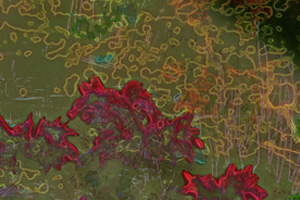
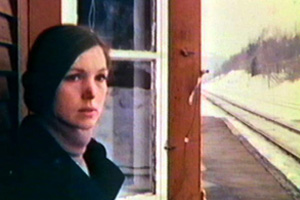
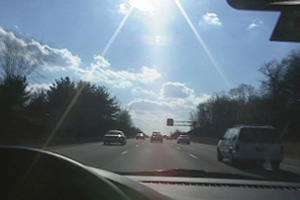
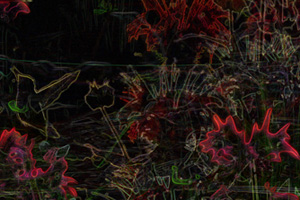
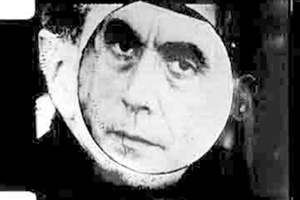
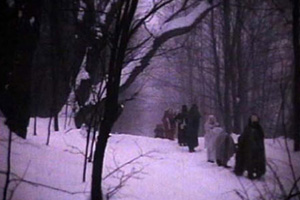
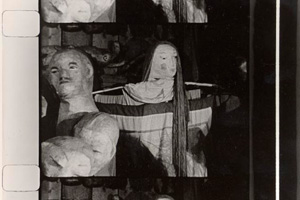
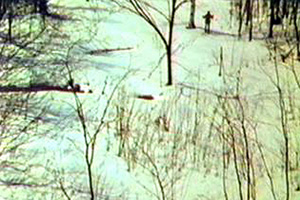
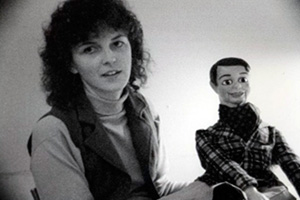
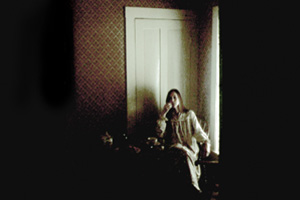
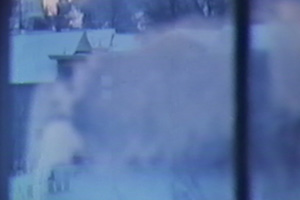
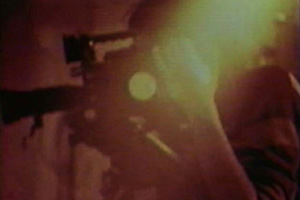
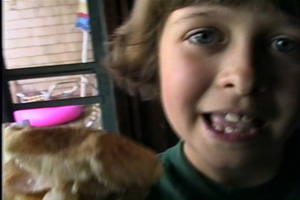

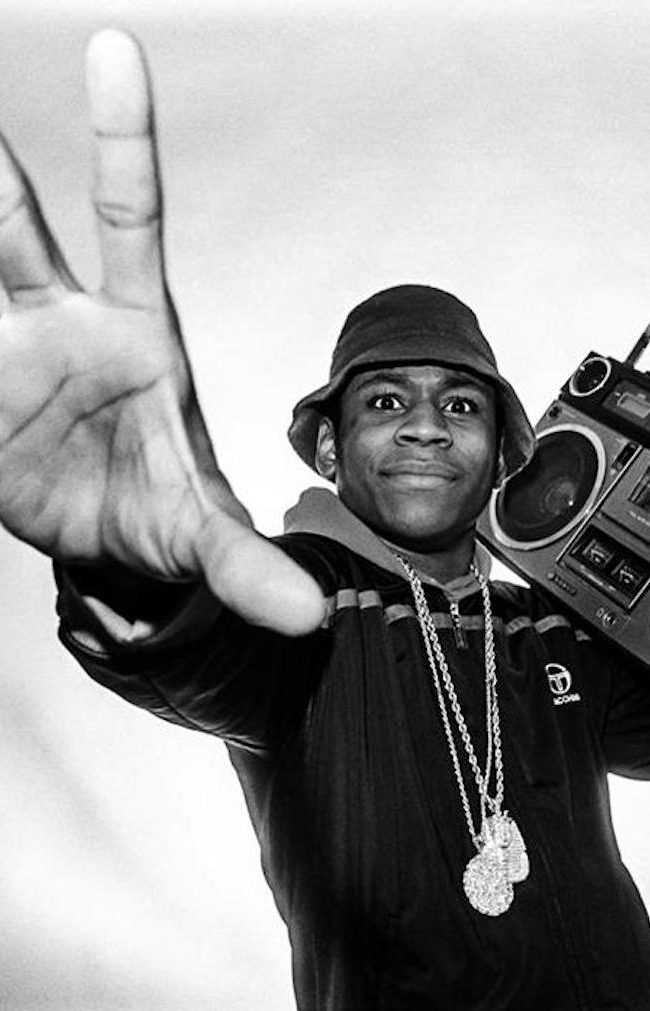
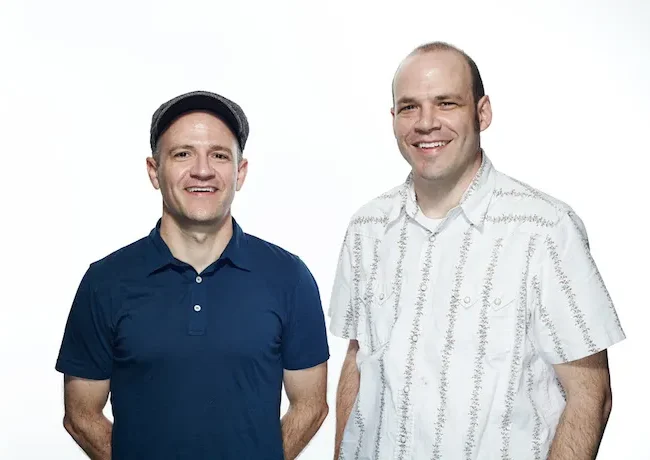


Jim MacAllister
Walter was my film teacher and friend when I attended Goddard College in the early 1970s. We got reacquainted years later while he was making Down the Road in which I appear briefly. One of my videos done for my Goddard senior study was a documentary on Walter’s films with an interview as narration. His work is always engaging, illusive, poignant and playful. He has a wonderful graphic sense when it comes to filling the frame and he loves to test or tease the viewer. In my own work over the years, I occasionally found myself shooting a scene to have it be reminiscent of something Walter had done (I guess that is homage). Now I work with microvideography of tiny organisms and phenomena. They often are reminiscent of Walter’s early, drawing on film work such as the Oobieland series. He sent me an email asking me to check out this interview, perhaps it was to prod me to send him the views of the microcosmos I have promised him.
Walter Ungerer
Several years ago Jim sent me short QuickTime clips of what happens under a microscope in the laboratory where he works. I saw organic blobs of changing colors and shapes constantly moving about in liquid space; reminiscent of my own OOBIELAND film animation drawings. When I saw the QT clips, they fascinated me. It was akin to viewing space through a telescope, or discovering the world of fractals. I felt privileged, a secret revealed. So I look forward to receiving more video clips from Jim.
Diannajrust
This interview with Walter was wonderful to read. I think Cullen did a terrific job at extracting some of the enigma behind Walter and his work. As his partner now for several years, I think I have seen every one of his films and never cease to be amazed at how prolific he is, while everything he does is always filled with the heart and soul of who he is. Thanks to Cullen some of that is shown here, and I know many people have enjoyed reading the interview.
E. Caristo
Very interesting article about an iconic independent experimental American filmmaker, who has for years been much ignored or forgotten by the media, possibly because he straddles the line between independent and experimental, narrative and non-narrative. Appreciation should be given to Gallagher for raising the awareness of Ungerer’s work to the public. I know his earlier longer films have been featured at MoMA, New York, but his recent films seem only to be available at film festivals around the country or by DVD purchase, this gleaned from Ungerer’s own Dark Horse Films website. Kudos to Gallagher for his overview of Ungerer’s prolific career.
Alexandra Karam
I watch Walter’s films as if I were watching dreams, and because I trust dreams fully — you can’t suspect dreams of dishonesty! — I allow myself to be totally absorbed by them, and so reading this wonderful article, in which both questions and responses describe so articulately the stages of creation and give us so much of Walter’s thought that goes into the making of his films, has been like crossing to the other side of the invisible curtain between the finished work and the process that brings it to life. And the mysteriousness of his films remains intact despite his openness and willingness to discuss them, and to tell us about his interior journey of creation.
Alexander Hripak
Good interview, the interviewer really knows your work. I’ve followed Walter’s works for a while and have seen them all. It was nice to see some of them summarized here. My favorite would have to be Down The Road.
Thanks for this article!
Harold Garde
I am so grateful that this interview was sent to me. The range of the work and the intelligent dedication to his craft are recognized. All very impressive. My admiration grows.
Harold Garde
Steve Goluchowski
I look for something new from Walter Ungerer every few months. Normally I end up at his darkHorseFilms website because it is at the top of the google search but this time I looked down the results page a little. Whoa, what did I find but an excellent article by someone named Cullen Gallagher! Cullen, this was an excellent read and I look forward to more from you on other topics.
wolfgang & annette
We think that the interview reflects Walter´s work very precisely and would like to add just one remark. Walter likes to film things
that, basically, cannot be filmed because nothing happens, nothing at least, that has any obvious significance. It is a tree or
a road or a car passing by. That´s it. Watching these things we are somehow forced to expect something to happen. But astonishingly enough, we do not feel disappointed, but begin to imagine what MIGHT happen. Someone hides behind the tree, the car is about to crash and so on. Doing this we find out that reality is not just what is or happens, but includes all those things that might be or might happen. That´s what we can also learn from Walter´s work. Art is the opposite of positivism.